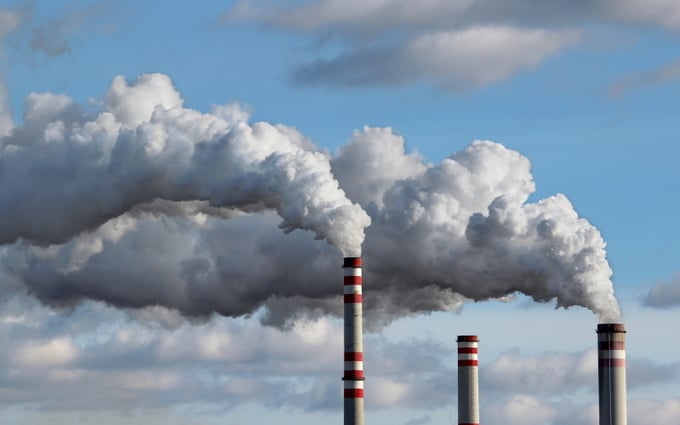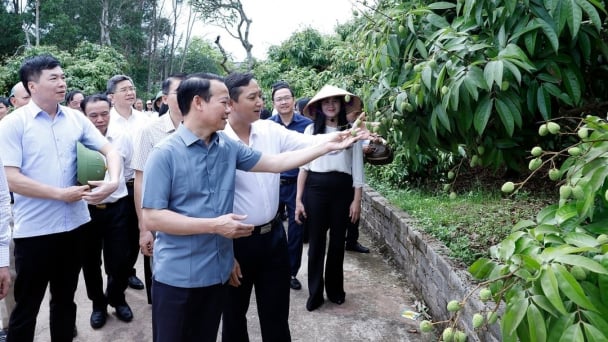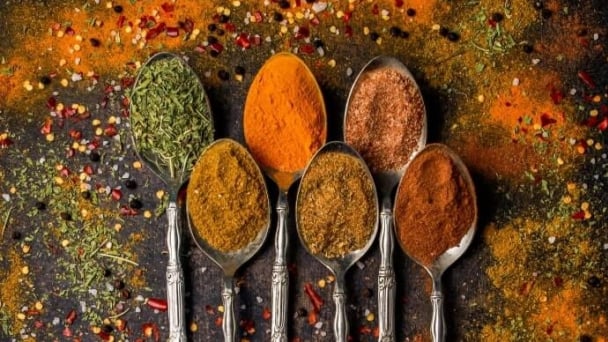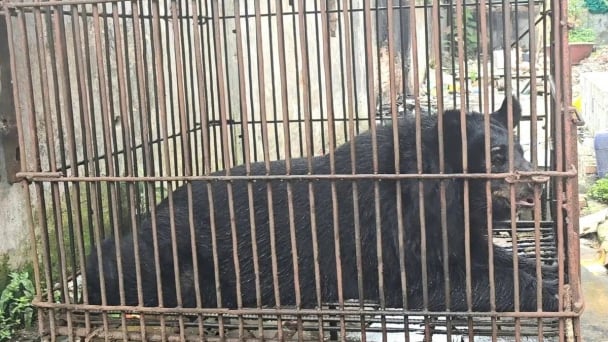May 14, 2025 | 08:34 GMT +7
May 14, 2025 | 08:34 GMT +7
Hotline: 0913.378.918
May 14, 2025 | 08:34 GMT +7
Hotline: 0913.378.918

The ratio of export-related CO2 emissions to total emissions of the entire economy in some countries, including Vietnam. Source: WB.
Global integration has been a primary factor in Vietnam's effective development over the past 40 years, facilitating one of the longest and fastest periods of economic growth in modern history. Vietnam is currently one of the most open economies in the world, with approximately 50% of its GDP and employment being dependent on exports, either directly or indirectly.
Vietnam's objective is to establish a modern, high-income economy by 2045, based on this foundation. According to the World Bank, to accomplish this ambitious objective, it is necessary to sustain an average annual per capita GDP growth rate of approximately 6% for the next two decades.
Vietnam must make substantial investments in technology, skills, and innovation in order to improve its position in the global value chain and achieve this objective. However, this transition is occurring in the midst of substantial global trade disruptions, which present significant obstacles.
The World Bank's report, "A Roadmap to Help Vietnam Become a High-Income Economy by 2045," emphasized that Vietnam's present development model is heavily reliant on labor-intensive exports that produce relatively low added value. Although this method has achieved success in the past, it is insufficient to elevate Vietnam to the high-income group.
In addition, foreign enterprises have been the primary drivers of Vietnam's trade integration, accounting for 73% of export turnover. In contrast, the majority of domestic businesses concentrate on non-tradable sectors, including traditional services, construction, and real estate, which do not integrate into global value chains. Domestic businesses were only 18% connected to global value chains in 2023, a significant decrease of 17 percentage points from 2009. Therefore, Vietnam only captures a small portion of the total value of its exports.

Controlling and reducing greenhouse gas emissions is the WB's recommendation for Vietnam. Photo: WB.
Vietnam's export model used to emphasize final-stage assembly, with services comprising only 12% of the total export value, which is 7% lower than that of manufactured products exported. Compared to Vietnam, other countries, such as South Korea, attain service value shares that are at least twice as high in their total exports.
The World Bank's primary recommendations for Vietnam are the regulation and reduction of greenhouse gas (GHG) emissions. Export-related emissions now account for over one-third of Vietnam's total CO2 emissions, a proportion that exceeds that of any comparable country in the region. Manufacturing-related CO2 emissions in Vietnam have tripled in relation to GDP growth. Furthermore, the majority of Vietnam's manufacturing and export capacity, which is concentrated in industrial zones, is situated in disaster-prone regions that are susceptible to coastal and river flooding.
Vietnam's service sectors are also confronted with substantial trade and investment barriers, which impede the entrance of foreign service providers and diminish the competitive pressure on domestic firms, particularly in critical sectors such as energy, finance, and telecommunications.
Despite the fact that Vietnam's economic success in global value chain integration has been driven by a large, inexpensive, and moderately skilled labor force, this dependence has resulted in stagnant wages for skilled workers. Statistics indicate that only a small percentage of manufacturing employees (approximately 5%) are highly competent, and only 10% of the population has a university degree—a figure that is lower than that of the majority of the countries with which the World Bank compares, with the exception of Indonesia.
According to its analysis, the World Bank proposes numerous policy solutions that concentrate on: Improving the depth of commerce integration; Enhancing the relationship between domestic enterprises and global value chains; Advancing high-tech, skill-intensive activities and services that provide significant value; Adopting low-carbon production models that are responsive to climate change.
Manuela Ferro, WB Vice President for East Asia and the Pacific, stated that Vietnam must transition from labor-intensive, low-value-added final assembly processes to the development of higher-value-added manufacturing and services in order to maintain accelerated growth. She also underscored the importance of diversifying trade and investment partnerships in order to establish long-term success and resilience in Vietnam.
Not only is it recommended that Vietnam transition to healthier production and increase emissions reductions in the coming years to meet climate targets, but also to preserve its global market competitiveness. In addition, the nation must promote the development of education and skills, while simultaneously promoting productivity spillovers from exporting firms to the broader economy. These measures would have a beneficial effect on productivity growth and would profoundly embed supply chains into Vietnam's domestic economy.
Translated by Linh Linh

(VAN) Agriculture and environment sector experienced a 3.74% increase in growth during the first four months of 2025, with exports surpassing 21 billion USD. This growth was sustained by effective reforms and a trade surplus.

(VAN) Taiwan offers a promising market for Vietnamese turmeric; however, it enforces stringent standards, particularly concerning residual additives, colourants, and substances with potential carcinogenic effects.

(VAN) Through activities at Vietnam Sea and Island Week 2025, solutions will be developed to fully harness the potential and advantages of Vietnam's marine economy.
![Multi-channel, multi-directional Vietnamese agricultural markets: [4] EVFTA and the 0% tax advantage](https://t.ex-cdn.com/nongnghiepmoitruong.vn/608w/files/linhnhp/2025/05/12/day-chuyen-che-bien-tom-tai-1-nha-may-cua-sao-ta-205536_359-1044193.jpg)
(VAN) The near-complete elimination of import tariffs on Vietnamese goods makes the EVFTA the highest commitment the EU has ever made to a partner in its signed trade agreements.

(VAN) Deputy Minister Phung Duc Tien hopes that China will facilitate the entry of Vietnamese agricultural products into its market and accelerate customs clearance at border gates.

(VAN) On May 10, the Animals Asia Foundation and the Hai Phong Crop Production and Forest Protection Department successfully rescued a nearly 20-year-old sun bear that was being kept by locals.

(VAN) Does Hungary have an opportunity to expand poultry production in the coming years despite the pressure from avian influenza and challenges of the trade war?